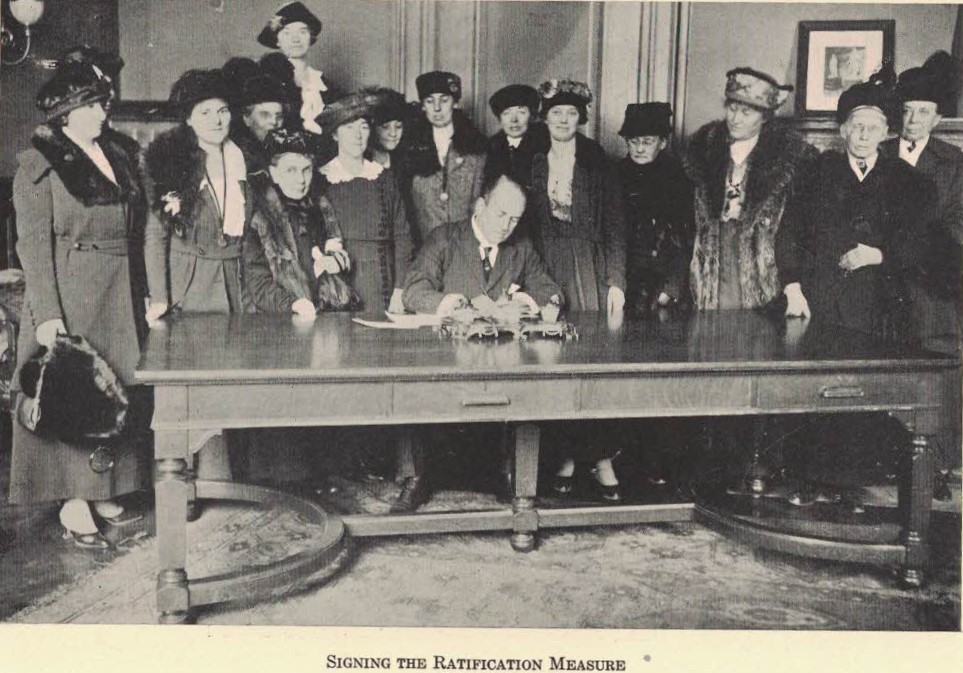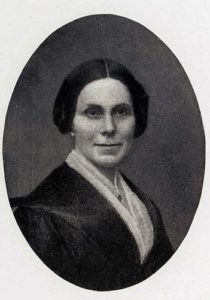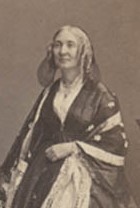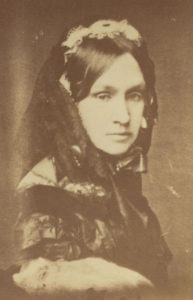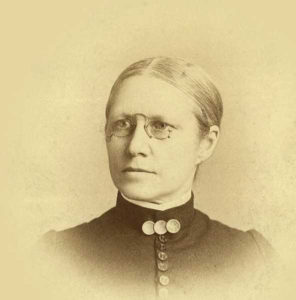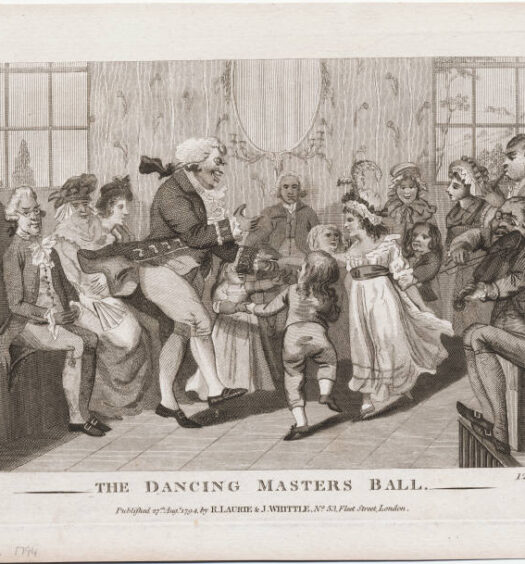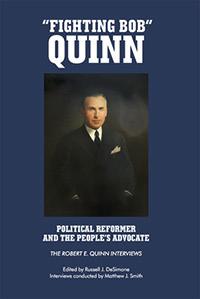This article is derived from a speech intended to be given on Rhode Island Statehood Day, May 29, 2020, in Pawtuxet as part of the Gaspee Days Celebration. This event, sponsored by the Heritage Harbor Foundation, had to cancelled due to the pandemic caused by the COVID-19 coronavirus.
May 29th is Rhode Island Statehood Day, the day the colony of Rhode Island became a state, the thirteenth state to be exact, when in 1790 its legislature ratified the United States Constitution. Much has been written and said of the venerable U.S. Constitution. We often hear talk of the First and Second Amendments to the Constitution whenever the topics of free speech and gun rights are discussed. In this article, I would like to address the Nineteenth Amendment, sometimes referred to as the Susan B. Anthony Amendment, which extended women the right to vote. The year 2020 is the centenary of the ratification of that important amendment. In addition, I wish to address another constitution, the Rhode Island state constitution, as it relates particularly to women’s suffrage during the 72-year odyssey of the women’s suffrage movement.
The Women’s Suffrage Movement
In the early 1840s Rhode Island was in a state of turmoil known as the Dorr Rebellion. This well documented event was due in part to restrictive suffrage requirements on the state’s white male citizens; those that supported suffrage expansion were known as Dorrites. During the rebellion, Rhode Island’s female Dorrites were active proponents of suffrage reform. Across the state these women formed Dorrite societies and became involved in the political discourse. In their role as advocates for a written state constitution and suffrage reform it might be said, and justifiably so, that it marked the first time in America that females took an active, collective and vocal stance for suffrage reform. However, it is commonly agreed that the woman suffrage movement began in 1848 when Lucretia Mott and Elizabeth Cady Stanton called for a women’s rights convention to be convened in upstate New York at Seneca Falls. Two hundred and forty men and woman met over a two-day period, the outcome of which was a Declaration of Sentiments and Grievances. Among the grievances listed were access to the elective franchise, right to property, equitable divorce laws, child custody, trial by jury of her peers, and access to education.
The first ever National Women’s Rights Convention held in the United States was held at Brinley Hall in Worcester, Massachusetts, on October 23 and 24, 1850. Providence resident Paulina Wright Davis was elected president and presided over the two-day convention. She also gave the convention’s opening address. Paulina would continue as president of the National Woman’s Rights Central Committee until 1858. She was the foremost female voice for woman suffrage in New England at that time. During her tenure as president she would commence publishing at Providence Una, a newspaper devoted to the “Elevation of Women.”
Rhode Islanders can be justly proud to claim two early woman’s rights newspapers. In addition to the Una and predating it by one year was The Pioneer and Woman’s Advocate. First published in 1852 at Providence by Anna W. Spencer, it ran for only one year. Anna’s life is somewhat of a mystery, but her newspaper was significant. In their History of the Woman Suffrage Movement, Susan B. Anthony and Elizabeth Cady Stanton noted that the newspaper “was the earliest paper established in the United States for the advocacy of Woman’s Rights.”
In her first issue of the newspaper Spencer wrote, “The wrongs will continue until women demand their redress. Who better than herself can press that demand? They who have not the heart and the will to demand their own rights, have little cause to complain of their loss.”
Although woman rights meetings would continue to be held throughout the 1850s little progress was made as it related specifically to suffrage and constitutional amendments. This was due in large part to the fact that many of the female voices for reform were mainly active in the anti-slavery and temperance reform movements. Focus on woman suffrage would have to wait until after the Civil War.
With the outbreak of hostilities in 1861 the nation turned its focus on the business of war, and as such, the woman’s suffrage cause took a back seat again as many women who might have been involved in the suffrage movement, both in the North and South, became involved with the more pressing matters of war.
As men, both young and old, marched off to war, women turned their attention to serve in many relief efforts. Some women became involved on the home front while others joined nursing organizations, including the United States Sanitary Commission, providing care for the wounded, sick and dying in field hospitals. Women also performed nursing duties at Rhode Island’s only Civil War hospital located at Portsmouth Grove on Aquidneck Island. Noted nineteenth century historian Edwin Stone, in his history of Rhode Island in the Civil War, observed that the Florence Nightingale Association was formed in Providence the day following the attack on Fort Sumter. This association shortly thereafter changed its name to The Providence Ladies Volunteer Relief Association. Each ward in Providence had a relief association raising funds and contributing articles for Rhode Island’s volunteers in the field and in hospitals. The Providence Relief Association even entered into government contracts providing garments for the troops. As many as 575 women were employed in this process. Stone goes on to say, “In Newport, Bristol, Warren, Pawtucket, Woonsocket, and in every other town in the State, similar associations have been industriously engaged in like works.” As soon as the war ended, woman, now somewhat more enlightened about national affairs than before the war, turned their attention to suffrage reform.
A Split in the Woman Suffrage Ranks
Following the war came the passage of the Thirteenth, Fourteenth and Fifteenth Amendments to the United States Constitution. Unfortunately, it was the Fifteenth Amendment that caused a split in the woman suffrage movement. The Fifteenth Amendment granted suffrage to former slave men, but it contained no provision for women enfranchisement. Some suffragists like Lucy Stone, her husband Henry Blackwell, Rhode Island summer resident Julia Ward Howe and others favored its passage in the expectation that another amendment would come along to enfranchise women. Other suffragists like Susan B. Anthony and Elizabeth Cady Stanton opposed its passage unless it accommodated women as well. The split would last for 21 years with those suffragists favoring Lucy Stone’s position forming the American Woman’s Suffrage Association (AWSA – November 1869) while those favoring Susan B. Anthony’s position formed the National Women’s Suffrage Association (NWSA – May 15, 1869).
Likewise, in Rhode Island its two leading suffragists backed opposing camps. Paulina Wright Davis supported the more extreme view of the NWSA, while Elizabeth Buffum Chace, a Quaker and staunch abolitionist who could not abandon the slave’s cause, supported the AWSA.
In November 1868 a large public meeting of more than 1,000 attendees representing eleven different states was held in Boston to address the subject of women’s suffrage. Elizabeth Buffum Chace and Paulina Wright Davis, both of whom were for many years the leading female voices for reform in Rhode Island, participated as members of the planning committee. The meeting was a success and resulted in the formation of the New England Woman’s Suffrage Association. Present at this gathering were such notables as Susan B. Anthony, Elizabeth Cady Stanton, Lucy Stone, Abby Kelly, Lucretia Mott, Ralph Waldo Emerson, Bronson Alcott and William Lloyd Garrison. Buoyed up by the success of the Boston meeting, both Paulina Wright Davis and Elizabeth Buffum Chace called for a statewide convention to establish a Rhode Island affiliate of the New England organization. On December 11, 1868, just three weeks after the Boston convention, the Rhode Island Woman’s Suffrage Association (RIWSA) was formed at Roger Williams Hall in Providence. From its first year of existence this association would petition the legislature for an amendment to the state constitution for the abolishment of gender as a condition of suffrage, and in 1874 hearings were held in committee of the General Assembly.
Rhode Island Women Run for Office
Not surprisingly women could not run for statewide elected office. Article IX (Of Qualification for Office) of the state constitution specified that “No person shall be eligible to any civil office, except the office of school committee, unless he be a qualified elector for such office.” As no woman could be an elector, the only opportunity available was as a candidate for local school committeewoman.
Within five years of the founding of the RIWSA, women began to appear as candidates for elective office. The first-time women ran as candidates for office occurred in Providence in 1873 when Rhoda Peckham (Fourth Ward), Sarah Doyle (Fifth Ward), and Elizabeth Churchill (Eighth Ward) ran for positions on the school committee. All of them were defeated. Doyle had the backing of the National Union Republicans, while Peckham and Churchill ran as independents. One local newspaper implied that Doyle was cheated out of being elected, noting “When the polls opened in the fifth ward, instead of Mrs. (sic) Doyle’s name being on the ballots for the place to which she had been nominated, there appeared the name of John W. Angell, Esq., and until about eleven o’clock a.m., he had the field to himself. At that hour, however, Mrs. Doyle’s friends appeared with the ‘regular’ nomination, and from that time to the close of the polls she received 145 votes; Mr. Angell, notwithstanding his several hours start in the race, only winning by a majority of 38. From this fact, it is clear had Mrs. Doyle’s name been in its proper place at the opening of the polls, she would have beaten her opponent handsomely.”
While no female was elected in 1873, the year stands out as an historic moment when Rhode Island women first ventured into the political arena as candidates for state office. The following year three women, Anna E. Aldrich (Fourth Ward), Elizabeth C. Hicks (Seventh Ward) and Abby D. Slocum (Ninth Ward) were all elected to the Providence School Committee. From this time on it would no longer be unusual for a woman to run for a seat on a school committee.
Sarah Helen Whitman, best known as a poetess and the one-time fiancée of Edgar Allen Poe, was also active in the Rhode Island women’s suffrage movement. She was elected a vice president of the RIWSA at its inaugural meeting in December 1868. She wrote the poem “Women’s Sphere,” which contains these lines:
Must she then sit with folded hands and tarry,
Till some fair sybil tell her “whom to marry?”
Better devote her time to ward committees,
To stumping States and canvassing the cities;
Better no more on flimsy fineries dote,
But take the field and claim the right to vote.
The Rhode Island Woman Suffrage Amendment of 1887
As previously noted, since its founding in 1868, the RIWSA annually petitioned the state legislature for a constitutional amendment to abolish gender as a condition of suffrage. This call always went unheeded, but in 1885, on a bill proposed by Representative Edward L. Freeman, it passed both houses. Due to a technicality, however, it failed. The bill appeared again in 1886 and received the required 2/3rds majority. Bills of this nature needed to pass by a 2/3rds majority in two consecutive legislative sessions, which it did. The last vote count in the General Assembly was 25 to 8 in the Senate and 57 to 5 in the House.
Days before the April 1887 general election, newspapers printed long lists of prominent people, mostly men, who opposed passage while other lists, not quite as long, also appeared with the names of prominent people who favored passage. The amendment needed a 2/3rds majority of the state’s voters and prospects appeared dim for its passage.
This women’s suffrage amendment went before the electorate on April 6, 1887. While some had high hopes for passage, the amendment never really had a chance – it failed miserably by a vote of 21,957 (76.2%) to 6,889 (23.8%). The Newport Daily News said it best: “The woman suffrage amendment was simply buried, completely overwhelmed by an April snowstorm of ballots.” While this setback was a disappointment to woman suffrage supporters, they could be proud of the fact that Rhode Island was the first eastern state to even consider and vote on a women’s suffrage referendum.
Paradoxically, while the Republican party showed some support for woman suffrage, they were staunchly against naturalized males being extended suffrage on the same terms as native-born citizens. Rhode Island Democrats were just the opposite, shunning woman suffrage but favoring naturalized male suffrage. Three months after the April 1887 election, the Boston Beacon in recognition of perhaps not only the failed woman suffrage amendment but also the inequitable franchise restrictions on naturalized citizens, quipped “In democratic Rhode Island they have not even manhood suffrage, thanks to the Democrats whose southern brethren are bitterly opposed also to plain manhood suffrage, not to mention ‘universal’ suffrage which includes women.” The year following this quote, the Eighth Amendment to the Rhode Island state constitution, the so-called Bourn Amendment, was ratified; it was a step in the right direction by putting all male citizens on the same level for statewide elections. Unfortunately, this amendment did little to correct inequities in municipal elections that still imposed discriminatory property tax qualifications – a situation that would not be remedied until the twentieth century.
Woman Suffrage Moves West to East
In 1890 the split between the two major woman suffrage organizations was resolved and the National Woman Suffrage Association headed by Susan B. Anthony and the American Woman Suffrage Association headed by Lucy Stone merged to become the National American Woman’s Suffrage Association. The agitation for woman suffrage was beginning to bear fruit. By 1900 three states and three territories allowed for woman suffrage, all of them in the western part of the country. The wave of equal suffrage continued its march from west to east and as if an inevitable force was at work, other states soon joined in: Washington in 1910, California in 1911, and Arizona, Kansas and Oregon in 1912. In 1913 the state of Illinois passed a bill allowing for presidential suffrage for women and by 1914 eleven states had equal suffrage as well as the territory of Alaska.
Another Split in Woman Suffrage Organizations
The year 1913 saw the second great split in the woman suffrage movement. The National American Woman Suffrage Association had worked tirelessly since 1869 to get each individual state to enact a woman suffrage measure but there were some woman that felt a national push in favor of a United States constitutional amendment would be the better path to follow. Led by Alice Paul and Lucy Burns, a split occurred within the NAWSA in 1913. The resulting new organization was called the Congressional Union, but in 1915 this organization would change its name to the National Woman’s Party.
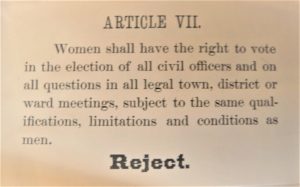
Election ballot for the 1887 referendum to amend Rhode Island’s constitution granting women the right to vote (Russell DeSimone Collection)
Rhode Island Presidential Woman Suffrage
In Rhode Island, with the passing of the old guard of suffrage leaders late in the nineteenth century, a new wave of women come to the fore to carry on the work into the twentieth century. Woman like Alva Vanderbilt Belmont, with her vast wealth, and Sara Algeo, a powerhouse of energy, joined the movement. While not giving up on a state constitutional amendment, these women now put their energy into working for passage of a new state law permitting presidential woman suffrage. After all this just required passage of a law by the General Assembly and did ,not require ratification by the electorate as a constitutional amendment would. However, there was still resistance on the part of those in power; in 1914 Governor Aram Pothier came out against woman suffrage. He is quoted as saying, “I do not believe in the woman suffrage movement, because I feel quite sure the woman’s sphere is not in the political arena, but rather in the home and in circles such as this.” An attempt at a presidential suffrage bill in Rhode Island occurred as early as 1892, but after three hearings in the House the bill never made it out of committee. Other attempts at presidential women suffrage failed in both 1914 and 1915. But the tide of thinking was changing.
- Livingston Beekman, a Republican pro-woman suffrage state senator from Newport, was elected governor in November 1914 when the anti-suffrage incumbent Republican governor Aram Pothier did not run. Beekman defeated his pro-suffrage Democratic opponent Patrick Henry Quinn, who also favored a presidential woman suffrage bill. The composition of the General Assembly was changing too as more pro-suffrage senators and representatives were elected to office. Foremost among these was Senator Richard W. Jennings who in 1917 drafted the presidential suffrage bill. The bill passed the Senate on April 11 by a vote of 32 to 3 and it passed the House on April 17 by a vote of 71 to 20. The following day Governor Beeckman signed the bill into law, making Rhode Island the first of only two New England states to allow for presidential suffrage for women prior to the passage of the Nineteenth Amendment.
The Nineteenth Amendment
What we refer to as the Nineteenth Amendment could have been the Sixteenth Amendment, as the subject of woman’s suffrage appeared some years before in the U.S. Congress. As early as December 1866 an amendment regarding woman suffrage was introduced by Senator Edgar Cowan, a Republican from Pennsylvania. However, the time had not come for such a radical idea and the proposal was defeated by a vote of 37 to 9. Twelve years later, in June of 1878, Senator Aaron Sargent, a Republican from California introduced Senate Resolution 12, providing for woman suffrage; the Senate referred the proposed amendment to the Committee on Privileges and Elections. The following day, suffragists testified for the first time ever before senators on the issue of woman suffrage. Unfortunately, the Committee on Privileges and Elections, even after reviewing more than 30,000 petitions, recommended consideration of the issue be indefinitely postponed.
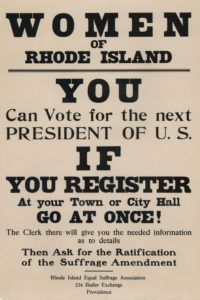
Following the passage of the Presidential Suffrage Bill in 1917, this broadside notified Rhode Island women to register to vote for the next presidential election (Russell DeSimone Collection)
Several more years would pass before Senator George Hoar, a Republican from Massachusetts, introduced a resolution to establish a Select Committee on Woman Suffrage. The resolution passed by a vote of 35 to 23. In 1886 this committee sent to the Senate an amendment providing for woman suffrage. The senate debated this resolution in December and on January 27, 1887, following further debate, a vote proved a crushing defeat for the suffrage cause – the tally was 16 yeas and 34 nays, while another 26 senators either abstained or were conveniently absent. Among those absent or abstaining were Rhode Island’s two senators, Nelson Aldrich and Johnathan Chace.
Twenty-seven years would pass before Congress would again take up the woman suffrage amendment. On March 19, 1914 the suffrage amendment failed to get the required 2/3rds majority in the U.S. Senate. Four years later, on October 1, 1918, the amendment again faced defeat in the Senate, this time falling short by only two votes for passage. Four months later, on February 10, 1919, the Senate again failed to pass the amendment, falling short by a single vote.
In the spring of 1919, on June 4, after many years of effort, the United States House and Senate finally passed the Nineteenth Amendment. The amendment’s wording was simple and straightforward:
The right of citizens of the United States to vote shall not be denied or abridged by the United States or by any State on account of sex. Congress shall have power to enforce this article by appropriate legislation.
Now it would be up to the individual states to ratify it. As the country consisted of 48 states, a total of 36 states (three-fourths of the states) would be required for ratification. Nine states—Illinois, Wisconsin, Michigan, Kansas, Ohio, New York, Pennsylvania, Massachusetts and Texas—ratified the amendment before the month of June was over. Other states soon followed, and by the end of 1919, a total of 22 states had voted for ratification. Kentucky joined Rhode Island as the first two states to ratify in the new year, making Rhode Island the 24th state to vote in favor of the amendment.
Rhode Island’s legislature ratified the amendment on the opening day of its session on Tuesday, January 6, 1920. Waiting for the General Assembly members this day was a letter sent the previous Thursday, New Year’s Day, by the Rhode Island Equal Suffrage Association urging a vote in favor of ratification. The letter in part reads: “Rhode Island was the first eastern state to break through the prejudice obtaining against suffrage for women and we believe that our men will live up to their traditions and make ratification unanimous. It would be a high compliment to the women of the state if this could be done on the first day of the session, and anything which you, personally, can do to help will greatly be appreciated. Twenty-two states have already taken action and with Rhode Island in the lead for 1920 we expect to complete ratification throughout the country by February.”
While the vote in the state House and Senate on January 6 was not unanimous, it was significant. The House voted 89 to 3 in favor, with only the Speaker of the House, Arthur P. Sumner, and two other Republicans, William H. Thayer of Bristol and Albert Zurlinden of Lincoln, voting against. In the Senate only one man, John H. McCabe, a Democrat from Burrillville, voted against ratification.
Nationally, following the lead of Rhode Island and Kentucky, three more states ratified in January 1920 and six in February. On March 22 Washington became the 35th state, but then momentum ground to a halt. Eight states, all southern states, had voted against ratification and it looked like the amendment might not pass, with just five states remaining to vote. On August 18, Tennessee was set to vote, and it looked certain that it would reject the amendment as many in the legislature were “antis.” As the legislators entered the chamber, those who favored passage wore yellow roses in their lapels while the “antis” wore red roses. There were more red roses than yellow, and a quick count showed the amendment would fail by one vote. But as the roll call was taken the last person to vote was also the legislature’s youngest member, twenty-four-year-old Harry Burn from McKinn County, and he wore a red rose. The story has been told often but it is worth repeating here, the young Burn had tucked away in his pocket a folded letter from his mother, the letter read:
Dear Son,
Vote for suffrage and don’t keep them in doubt. I notice some of the speeches against. They were very bitter. I have been watching to see how you stood, but have not seen anything yet. Don’t forget to be a good boy.…
With lots of love, Mama
Harry Burn did as his mother asked; he voted in favor of ratification, thus insuring passage of the Nineteenth Amendment.
Eight days after the Tennessee vote, the United States Secretary of State Robert Lansing certified the passage of the amendment, making it the law of the land. Less than three months later, on November 2, 1920, more than 8 million women voted in the national elections. The amendment would come to be known as the Susan B. Anthony Amendment.
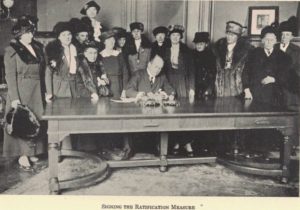
On January 7, 1920, the day following the General Assembly’s ratification of the 19th Amendment, Governor Beeckman signed the ratification resolution, surrounded by the leading suffragists of the state (Russell DeSimone Collection)
When one considers the fact that more than 11,000 amendments have been proposed to the United States Constitution since its inception in 1789, and only 27 have been ratified, including one that nullified another, it seems quite remarkable that the Nineteenth Amendment exists at all.
Summary
Rhode Islanders should be justly proud of their state’s role in the women’s suffrage movement. Some facts of note include:
- Rhode Island resident Paulina Wright Davis was a leading voice in the push for woman suffrage in New England.
- Rhode Island has the distinction of producing two of the earliest woman rights newspapers, The Pioneer and the Una.
- Long-time Portsmouth summer resident Julia Ward Howe was a co-founder of the American Woman Suffrage Association.
- In 1887 Rhode Island was the first Eastern state to have a proposed woman suffrage constitutional amendment to its constitution.
- Newporter Alva Vanderbilt Belmont was a co-founder and financial backer of the National Woman’s Party.
- Rhode Island allowed woman suffrage for presidential electors in 1917 three years before the ratification of the Nineteenth Amendment.
[Banner image: On January 7, 1920, the day following the General Assembly’s ratification of the 19th Amendment, Governor Beeckman signed the ratification resolution, surrounded by the leading suffragists of the state (Russell DeSimone Collection)]
Additional Reading:
Algeo, Sara A., The Story of a Sub-Pioneer, Snow and Farnum, 1925.
Stevens, Elizabeth C., Elizabeth Buffum Chace and Lillie Chace Wyman, McFarland & Company, 2003.
Ward, Geoff C. and Ken Burns, Not for Ourselves Alone, Alfred A Knopf, 1999.
In addition to the books sited here numerous newspaper accounts were also used in the writing of this article, many taken from the Providence Daily Journal, the Pawtucket Evening Times and the Woman’s Journal.

